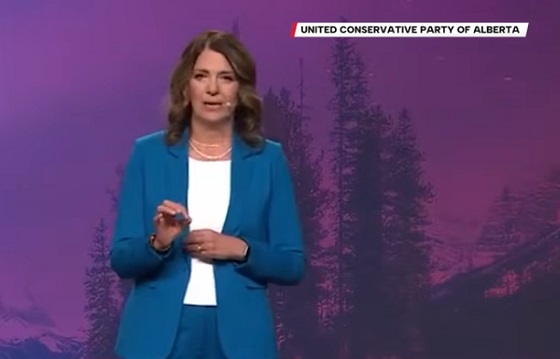Addictions
“Government Heroin” documentary exposes rampant safer supply fraud
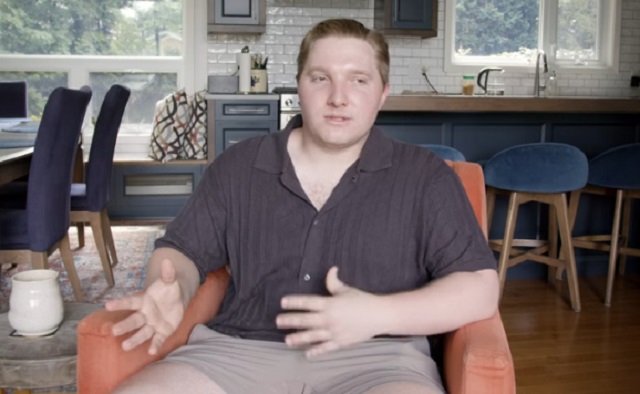
By Adam Zivo
There is no substitute for hearing testimony with your own ears and eyes.
Although there is ample evidence that Canada’s “safer supply” programs are being widely defrauded and flooding communities with opioids, advocates continue to deny that this problem exists. That’s why I premiered my new documentary this week, “Government Heroin,” which follows the story of Callum Bagnall, a 25-year-old student who purchased thousands of diverted safer supply pills in London, Ontario.
While many written accounts of safer supply fraud have been published in the Canadian media, this documentary provides, for the first time, an extended interview with a former addict who openly describes his own use of these diverted drugs. It is one thing to read these stories, and altogether another to watch and listen to them – so perhaps this will help dispel the myths that have been pushed, rather aggressively, by the harm reduction movement.
In the film, Callum explains how, three years ago, a friend informed him that drug users in the city were receiving “insane” amounts of free safer supply drugs – predominantly hydromorphone, an opioid as potent as heroin. While these drugs are meant to wean addicts off riskier street substances, the friend explained that recipients mostly sell their safer supply at bargain prices so they can procure stronger substances, such as illicit fentanyl.
At first, Callum thought this was a joke. He had been struggling with a moderate addiction to pharmaceutical opioids – mostly oxycodone and Percocet – but, as these pills were expensive and hard to find, his drug use remained stable. The idea that the government was showering individuals with hundreds of powerful opioid pills a month, for free and with essentially no supervision, seemed “almost like a dream for a drug addict.”
But then he connected with some safer supply clients and realized that everything that he had heard was true. Fueled by a near-limitless supply of dirt-cheap opioids, Callum’s drug use rapidly spun out of control and, for two years, his life fell into utter disarray. Although he went to rehab last year, he says that his mind remains muddled by the aftereffects of these drugs to this day.
“I would have already been at the end of my road and (would) have gone to rehab at that point, if safer supply drugs weren’t so cheap and available. With the small amount of money I was making, I was able to afford hundreds of safer supply pills a week because of how cheap they were,” he says.
It was obvious to Callum that these pills were not counterfeit, given their quality and consistency and the fact that they typically came in their original, labelled prescription bottles: “Usually the people I was buying them from would try to scratch out the doctor’s name or their name. They were kind of paranoid about that. But sometimes they would just give it to me with the label unripped, not covered with marker or anything.”
Callum estimates that 90 percent of the safer supply clients he interacted with were diverting their drugs – a figure that is fairly consistent with estimates provided by former drug users I interviewed in London last year, who typically placed the diversion rate among their circles at around 80 percent.
Callum also believes that organized crime is involved in the trafficking of these drugs, and recalled how one higher-level dealer said that he would drive to northern Ontario, where safer supply is essentially unavailable, with thousands of pills stowed in his trunk to resell at a significant profit.
Subscribe for free to get BTN’s latest news and analysis, or donate to our journalism fund.
While I was unable to independently verify Callum’s claim about intraprovincial trafficking, his testimony is consistent with information provided to me earlier this year by Michael Tibollo, Ontario’s Associate Minister of Mental Health and Addictions, who said that, based on certain police reports and epidemiological data, it is clear that there is a particular problem with safer supply drugs being trafficked from London to northern Ontario.
Callum was able to corroborate the general contours of his story by providing dozens of screenshots of time-stamped text conversations between himself and his former dealers (some of which appear in the documentary), as well as excerpts of his medical records indicating that he had been diagnosed with severe opioid use disorder and had been “buying safer supply from friends.”
He also called a safer supply patient whom he used to purchase drugs from, and, while I listened in, had her confirm that she had hundreds of pills ready to sell and could introduce him to a safer supply doctor if he wanted to get on the program. A video recording of this conversation was originally meant to be included in the documentary, but was cut to mitigate risk of retaliation.
Finally, Callum’s mother, a registered nurse, appears in the documentary and recounts finding safer supply prescription bottles in her son’s room on the day he went to rehab.
As public scrutiny of safer supply has increased over the past year, providers have insisted that they are closely monitoring diversion through urine testing. Yet Callum says that the clients he interacted with would occasionally, in the process of selling their drugs, withhold a few of their pills and openly admit to him that they needed these small amounts to pass their tests.
“(They) would also take one or two pills the night before they get their prescription, so that it looks like it’s in their system. It shows up on the urine tests. So they would use that to pass the urine tests, so that they would get another script the next week,” he says in the film.
The exploitation of this loophole was confirmed by Dr. Janel Gracey, an addiction physician who treated Callum and who is also featured in my documentary. She says that “it is known in the addiction world that urine testing is not effective at catching diversion” because such tests only measure the presence of a drug, not its quantity. A safer supply patient can divert almost all of their drugs and still pass their urine tests, she says, so long as they take just one pill before giving their samples.
Gracey characterizes Canada’s current safer supply system as an underregulated “free for all” that destabilizes patients while allowing some pharmacists and physicians to reap considerable profits. “I know people on the safer supply program that have never even used fentanyl, and that’s the whole point of the program: to get them off the fentanyl. So they’re just lining up and getting a bunch of (hydromorphone), really, for no reason,” she says.
Gracey estimates that, of her 400 patients, approximately half have used, or know someone who has used, diverted safer supply drugs. She says that inexpensive hydromorphone is now “readily available on every street corner here in London,” and that dealers are “bombarding” her patients with the drug, causing many of them to “fall off the rails.”
“We are seeing younger and younger patients come in, unfortunately. Fifteen (and) 16-year-olds coming in, and they’re getting hooked on (hydromorphone) because it’s so incredibly cheap. It’s cheaper than alcohol,” she says. “We do get a few coming in that are there because of fentanyl use, but usually even the (young fentanyl users) started with (hydromorphone).”
I encourage you to watch “Government Heroin,” as the 19-minute documentary provides a more visceral and comprehensive account of the harms described here. There is no substitute for hearing testimony with your own ears and eyes.
This article was originally published in The Bureau, a Canadian media outlet that investigates the intersections of organized crime, drug trafficking and foreign interference.
Subscribe to Break The Needle. Our content is always free – but if you want to help us commission more high-quality journalism, consider getting a voluntary paid subscription.
Addictions
Manitoba Is Doubling Down On A Failed Drug Policy

From the Frontier Centre for Public Policy
Manitoba is choosing to expand the same drug policy model that other provinces are abandoning, policies that normalize addiction while sidelining treatment, recovery, and public safety.
The New Democrat premier of British Columbia, David Eby, stood before reporters last spring and called his government’s decision to permit public drug use in certain spaces a failure.
The policy was part of the broader “harm reduction” strategy meant to address overdose deaths. Instead, it had stirred public anger, increased street disorder and had helped neither users nor the communities that host them. “We do not accept street disorder that makes communities feel unsafe,” Eby said. The province scrapped the plan.
In Alberta, the Conservative government began shutting down safer-supply prescribing due to concerns about drug diversion and misuse. The belief that more opioids can resolve the opioid crisis is losing credibility.
Ontario Progressive Conservatives are moving away from harm reduction by shutting down supervised consumption sites near schools and limiting safer-supply prescribing. Federal funding for programs is decreasing, and the province is shifting its focus to treatment models, even though not all sites are yet closed.
Yet amid these non-partisan reversals, Manitoba’s government has announced its intention to open a supervised drug-use site in Winnipeg. Premier Wab Kinew said, “We have too many Manitobans dying from overdose.” True. But it does not follow that repeating failed approaches will yield different results.
Reversing these failed policies is not a rejection of compassion. It is a recognition that good intentions do not produce good outcomes. Vancouver and Toronto have hosted supervised drug-use sites for years. The death toll keeps rising. Drug deaths in British Columbia topped 2,500 in 2023, even with the most expansive harm reduction infrastructure in the country. A peer-reviewed study published this year found that hospitalizations from opioid poisoning rose after B.C.’s safer-supply policy was implemented. Emergency department visits increased by more than three cases per 100,000 population, with no corresponding drop in fatal overdoses.
And the problem persists day to day. Paramedics in B.C. responded to nearly 4,000 overdose calls in July 2024 alone. The monthly call volume has exceeded 3,000 almost every month this year. These are signs of crisis management without a path to recovery.
There are consequences beyond public health. These policies change the character of neighbourhoods. Businesses suffer. Residents feel unsafe. And most tragically, the person using drugs is offered little more than a cot, a nurse and a quiet signal to continue. Real help, like treatment, housing and purpose, remains out of reach.
Somewhere along the way, bureaucracies stopped asking what recovery looks like. They have settled for managing human decline. They call it compassion. But it is really surrender, wrapped in medical language.
Harm reduction had its time. It made sense when it first emerged, during the AIDS crisis, when dirty needles spread HIV. Back then, the goal was to stop a deadly virus. Today, that purpose has been lost.
When policy drifts into ideology, reality becomes an afterthought. Underneath today’s approach is the belief that drug use is inevitable, that people cannot change, that liberty means letting others fade away quietly. These ideas do not reflect science. They do not reflect hope. They reflect despair. They reflect a politics that prioritizes the appearance of compassion over effectiveness.
What Manitoba needs is treatment access that meets the scale of the problem. That means detox beds, recovery homes and long-term care focused on restoring lives. These may not generate the desired headlines, but they work. They are demanding. They are slow. And they offer respect to the person behind the addiction.
There are no shortcuts. No policy will undo decades of pain overnight. But a policy that keeps people stuck using is not mercy. It is maintenance with no way out.
A government that believes in its people should not copy failure.
Marco Navarro-Genie is vice-president of research at the Frontier Centre for Public Policy and co-author, with Barry Cooper, of Canada’s COVID: The Story of a Pandemic Moral Panic (2023).
Addictions
The Death We Manage, the Life We Forget

 Marco Navarro-Génie
Marco Navarro-Génie
Our culture has lost the plot about what it means to live.
Reading that Manitoba is bringing supervised consumption to Winnipeg got me thinking.
Walk through just about any major Canadian city, and you will see them. Figures bent forward at seemingly impossible angles, swaying in the characteristic “fentanyl fold,” suspended between consciousness and oblivion. They resemble the zombies of fiction: bodies that move through space without agency, awareness, or connection to the world around them. We think of zombies as the walking dead. Health workers and bureaucrats reverse their overdoses, send them back to the street, and call it saving lives.
At the same time, Canada offers medical assistance in dying to a woman who cited chemical sensitivities and the inability to find housing. It has been offered to veterans who asked for support and were met instead with an option for death. We fight to prevent one form of death while facilitating another. The contradiction is not accidental. It reveals something about the people involved and the funding behind it. That’s our culture. Us. It appears to me that our culture no longer knows what life is.
Ask any politician or program bureaucrat, and you will hear them explain, in the dry language of bureaucracy, that the twin approach to what they call harm reduction and medical assistance in dying (MAiD) rests on the shared premise of what they believe to be compassion. They think they respect autonomy, prevent suffering, and keep people alive when possible. It sounds humane. It is, in practice, incoherent. Bear with me for a moment.
The medical establishment administers naloxone to reverse overdoses in people who spend as many as twenty hours a day unconscious. They live without meaningful relationships or memories, with little capacity for choice. The technocrats and politicians call that saving lives. They also provide assisted death to people whose suffering comes primarily from poverty, isolation, or lack of housing. There was a time when these factors could, at least in theory, be addressed so that the terminal decision did not need to be made. Now they are accepted as grounds for ending life.
But why is one preference final and the other treated as an error to correct? That question reflects the deeper disorientation.
We saw the same thing during COVID. Elderly people in care homes were left without touch, family, or comfort for days. They often died in solitude, their dementia accelerated by isolation. And those conditions were inflicted upon them in the name of saving their lives. The “system” measured success in preventing infections, not in preserving connections. Je me souviens. Or we should.
There is a pattern here. We have reduced the idea of saving lives to keeping bodies breathing, while ignoring what makes a life human: agency, meaning, development, and relationship. And in doing so, we begin to define life as mere biological persistence. But to define life by the capacity to breathe and perform basic functions is to place ourselves on the same footing as the non-human animals. It is to say, tacitly, that there is no fundamental distinction between a person and a creature. That, too, is a form of forgetting.
To be clear, the argument here is not that hopeless drug users should be administered MAiD. Instead, it is essential to recognize that the intellectual framework behind harm reduction and MAiD must be taken seriously, as it rests on some rationally defensible claims. In an age where most arguments are emotive and unexamined, the mildly logical has become strangely compelling.
It begins with the idea of autonomy. We cannot force others to live by our values. Every person must decide what makes life worth living. To insist otherwise is paternalism.
Then comes pragmatic compassion. People will use drugs whether we approve or not. People will find their lives unbearable, whether we acknowledge it or not. We can support them or moralize while they die.
There is also an emphasis on subjective experience. No one knows another’s pain. If someone says their suffering is intolerable, we are in no position to deny it, they say. If a user would rather face opioids than withdrawal and despair, are we entitled to interfere?
Finally, the comparison to medical ethics: we do not withhold insulin from diabetics who continue to eat poorly. We do not deny cancer treatment to smokers. Medicine responds to suffering, even when the patient has contributed to their condition. Harm reduction, they argue, simply applies that principle to addiction.
These arguments produced tangible benefits, they argue. Needle exchanges reduced HIV transmission. Naloxone kits prevented deaths. Safe injection sites meant fewer people dying alone. MAiD brought relief to those in agony. These were not trivial outcomes. I am aware.
Yet when we look more closely, the very logic that underlies these policies also exposes their fatal limitations.
Addiction undermines choice. It hijacks the brain’s ability to reason, compare, and choose. A person deep in addiction is not selecting between alternatives like someone choosing coffee or tea. The structure of choice, the human will, itself is broken. The addiction decides before the person does. St Augustine knew this. Dostoyevsky knew it too.
And for the empirically minded, the research supports this. In British Columbia, where the “safe supply” model was pioneered, some addiction physicians now say the policy is failing. Worse, it may be creating new opioid dependencies in people who were not previously addicted. A study earlier this year found that opioid‑related hospitalizations increased by about 33 percent, compared with pre‑policy rates. With the later addition of a drug-possession decriminalization policy, hospitalizations rose even more (overall, a 58 percent increase compared to before SOS’s implementation). The study concluded that neither safer supply nor decriminalization was associated with a statistically significant reduction in overdose deaths. This is not freedom. It is a new form of bondage, meticulously paved by official compassion.
Despair disguises itself as autonomy, especially in a spiritually unmoored culture that no longer knows how to cope with suffering. A person requesting assisted death because of chronic, untreatable pain may appear lucid and composed, but lucidity is not the same as wisdom. One can reason clearly from false premises. If life is reduced to the absence of pain and the preservation of comfort, then the presence of suffering will seem like failure, and death will appear rational. But that is not a genuine choice because it is based on a misapprehension of what life is. All life entails pain. Some of it is redemptive. Some of it is endured. But it does not follow that the presence of suffering justifies the conclusion of life.
Someone turning to drugs because of homelessness, abandonment, or despair is often in an even deeper eclipse of the will. Here, there is not even the appearance of deliberation, only the reach for numbness in the absence of meaning. What looks like a decision is the residue of collapse. We are not witnessing two forms of autonomy, one clearer than the other. We are witnessing the breakdown of autonomy in various forms, and pretending that it is freedom.
Biological survival is not life. When we maintain someone in a state of near-constant unconsciousness, with no relationships, no capacity for flourishing, we are not preserving life. We are preserving a body. The person may already be gone. To define life as nothing more than breathing and performing bodily functions is to deny what makes us human. It reduces us to the level of non-human creatures, sentient, perhaps, but without reason, memory, moral reflection, or the possibility of transcendence. It tacitly advances the view that there is no essential difference between a person and a critter, so long as both breathe and respond to some stimuli.
Governments do these things to keep ballooning overdosing deaths down, preferring to maintain drugs users among the undead instead. That reminds me of how the Mexican government hardly moves a finger to find the disappeared, 100,000 strong of lately. For as long ss they’re disappeared, they choose not to count them as homicides, and they feel justified in ignoring the causes of all the killing around them.
Some choices are nefarious. Some choices deserve challenge. Not all autonomous acts are equal. The decision to continue living with pain, or to fight addiction, requires agency. The decision to surrender to despair may signal the absence of it. To say all choices are equal is to empty the word autonomy of meaning.
This reflects a dangerously thin view of the human person that permeates our present. What we now call “harm” is only death or physical pain. What we call good is whatever someone prefers. But people are more than collections of wants.
We should have learned this by now. In Alberta, safer supply prescribing was effectively banned in 2022. Officials cited diversion and lack of measurable improvement. We are forcing some people into treatment because we recognize the impairment of judgement in addiction.
In British Columbia, public drug use was quietly re-criminalized after communities rebelled. This was an admission of policy failure. “Keeping people safe is our highest priority,” Premier David Eby said. Yet safe supply remains. In 2023, the province recorded more than 2,500 overdose deaths. Paramedics continue to respond to thousands of overdose calls each month. This is not success. It is a managed collapse.
Meanwhile, Manitoba is preparing to open its own supervised drug-use site. Premier Wab Kinew said, “We have too many Manitobans dying from overdose… so this is one tool we can use.” That may be so. However, it is a tool that others are beginning to set aside. It is a largely discredited tool. Sadly, in the self-professed age of “Reconciliation” with Aboriginal Canadians, Aboricompassionadians are disproportionately affected by these discredited policies.
The Manitoba example illustrates the broader problem, despite damning evidence. Instead of asking what helps people live, we ask whether they gave consent. We do not ask whether they were capable of it. We ask whether they avoided death. We do not ask whether they found purpose.
We are not asking what might lead someone out of addiction. We are not asking what they need to flourish. We ask only what we can do to prevent them from dying in the short term. And when that becomes impossible, technocracy offers them death in a more organized form, cleanly approved by government. That’s compasson.
The deeper problem is not policy incoherence. It is the cultural despair that skates on the thin ice of meaninglessness. These policies make sense only in a culture that has already decided life is not worth too much. What matters is state endorsement and how it’s done .
It is more cost-effective to distribute naloxone than to construct long-term recovery homes. It is easier to train nurses to supervise injection than to provide months of residential treatment. It is far simpler to legalize euthanasia for the poor and the suffering than to work on solutions that lift them out of both. But is it right?
This is not compassion. It is surrender.
A humane policy would aim to restore agency, not validate its absence. It would seek out what helps people grow in wisdom and self-command, not what leaves them comfortably sedated. It would measure success not in lives prolonged into darker dependency but in persons recovered. In lives better lived.
This vision is harder. It costs time. It requires greater effort. It requires care and what some Christians call love of neighbour. It may require saying no when someone asks for help that could lead to ruin. But anything less is not mercy. It is a slow walk toward death while we leave the “system” to pretend there is no choice.
We did have a choice. We chose shallow comfort over deep obligation. We chose to manage symptoms rather than confront the deeper conditions of our age: loneliness, meaninglessness, despair. And now we live among the results: more, not fewer, people swaying in silence, already gone walking dead.
We might ask what we’ve forgotten about suffering, about responsibility, about what life is. Lives are at stake. True. But when our understanding of life is misdirected, so will be the policies the state gives us.
We are grateful that you’re reading Haultain Research.
For the full experience, and to help us bring you more quality research and commentary,
-

 National1 day ago
National1 day agoCanada Needs an Alternative to Carney’s One Man Show
-

 Alberta14 hours ago
Alberta14 hours agoThis new Canada–Alberta pipeline agreement will cost you more than you think
-

 Daily Caller1 day ago
Daily Caller1 day agoTech Mogul Gives $6 Billion To 25 Million Kids To Boost Trump Investment Accounts
-
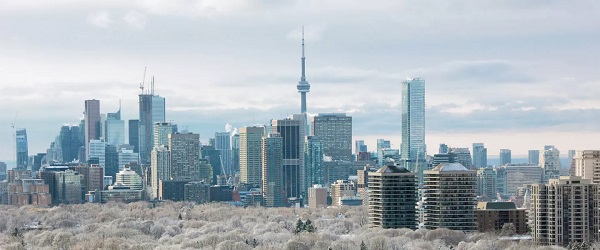
 Business1 day ago
Business1 day agoRecent price declines don’t solve Toronto’s housing affordability crisis
-
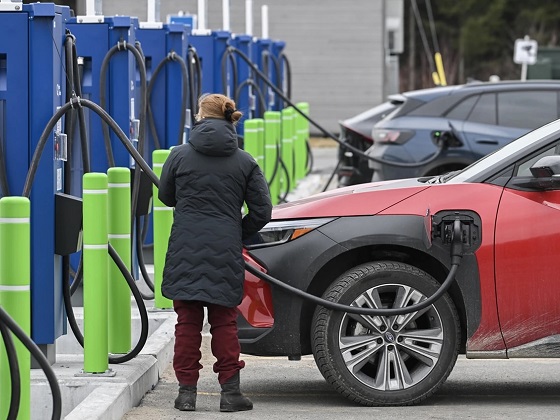
 Automotive13 hours ago
Automotive13 hours agoPower Struggle: Governments start quietly backing away from EV mandates
-

 Energy13 hours ago
Energy13 hours agoUnceded is uncertain
-
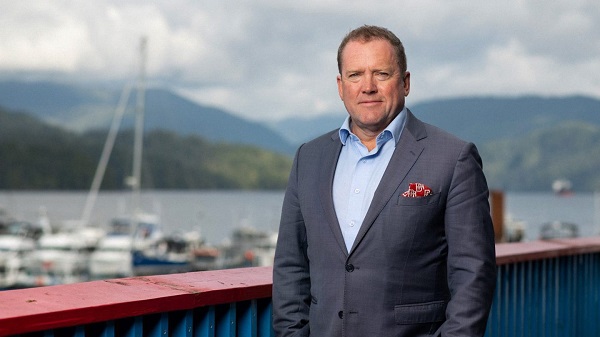
 Business1 day ago
Business1 day agoCanada’s future prosperity runs through the northwest coast
-

 armed forces2 days ago
armed forces2 days agoGlobal Military Industrial Complex Has Never Had It So Good, New Report Finds




